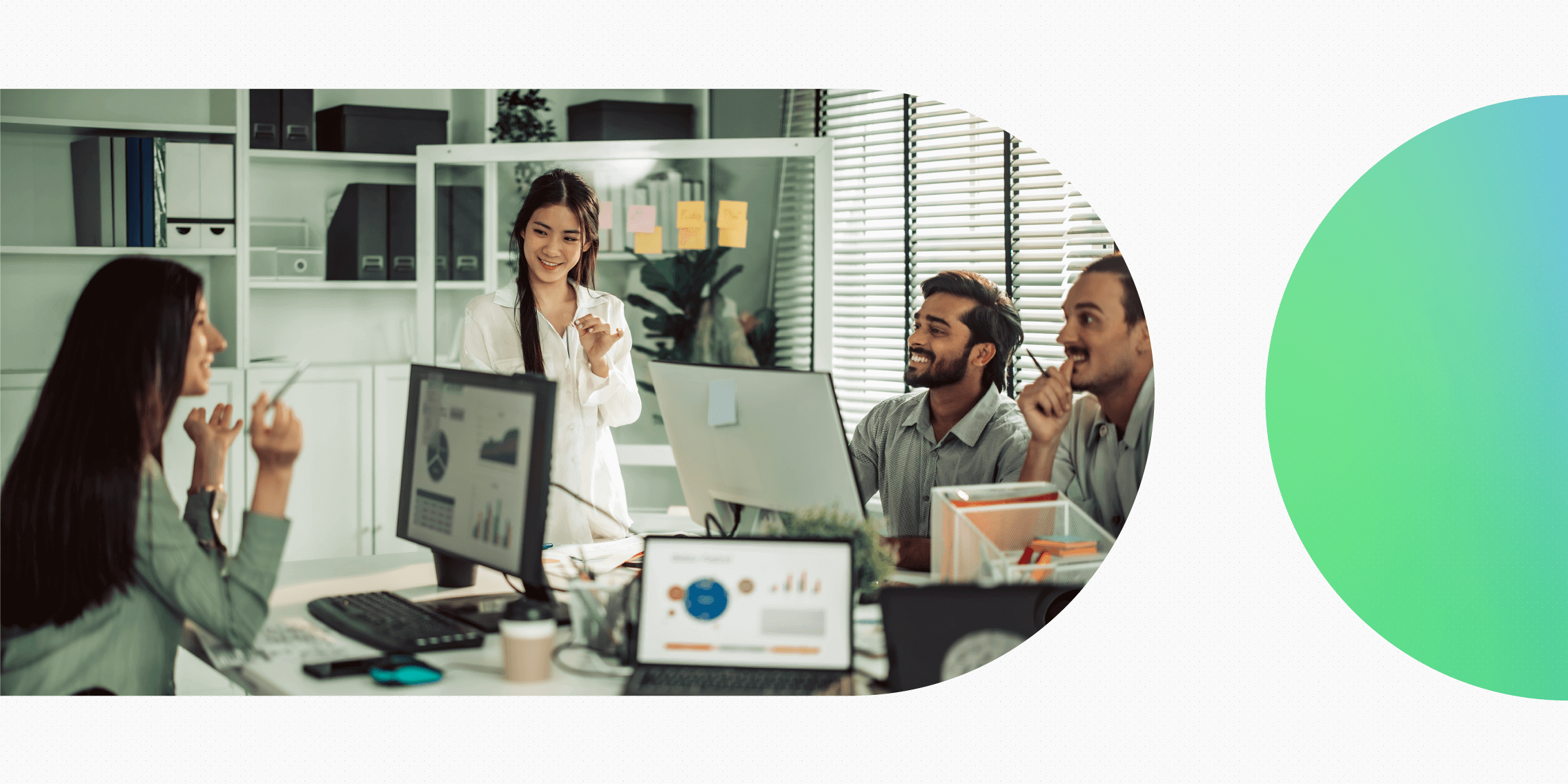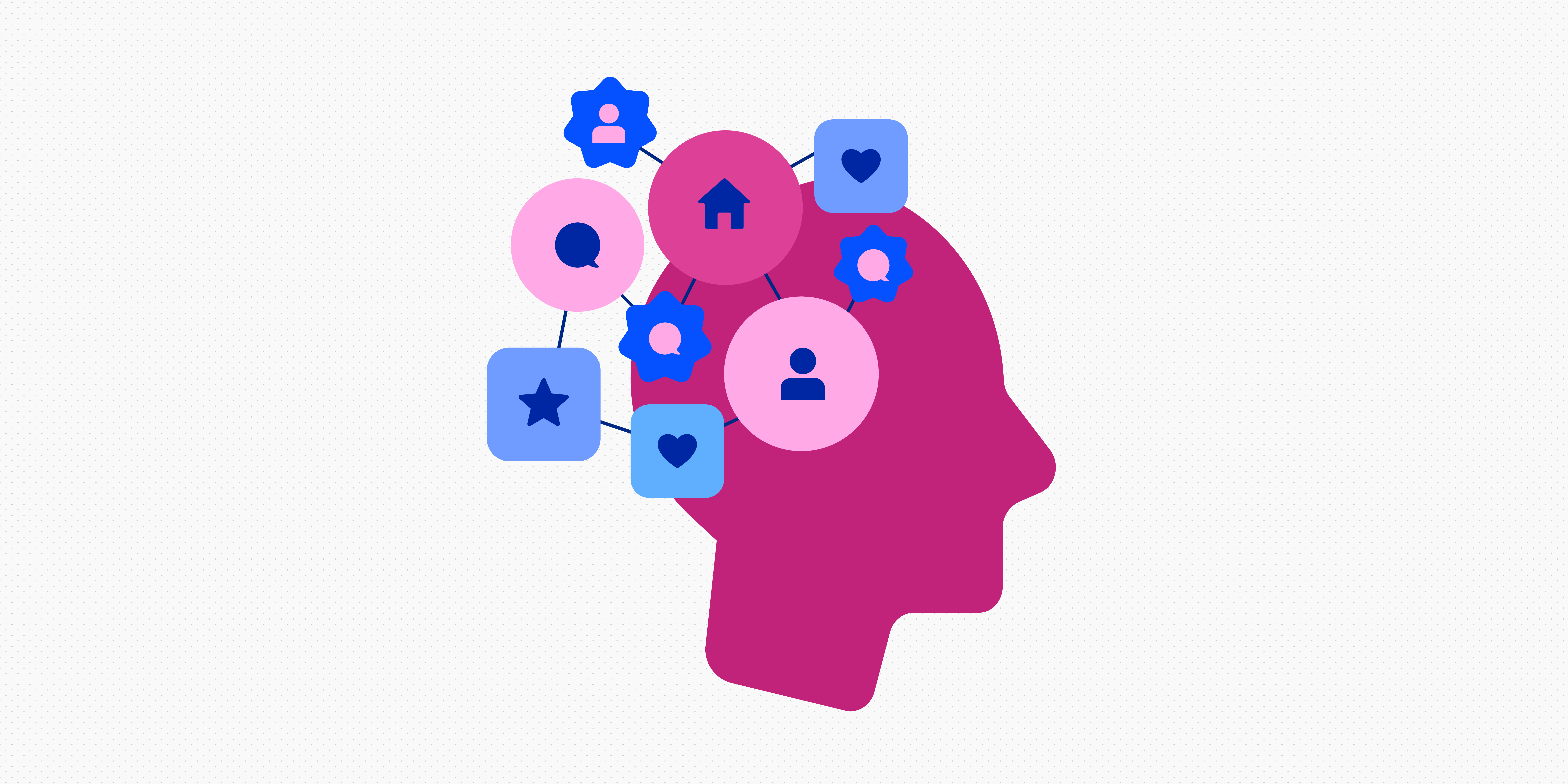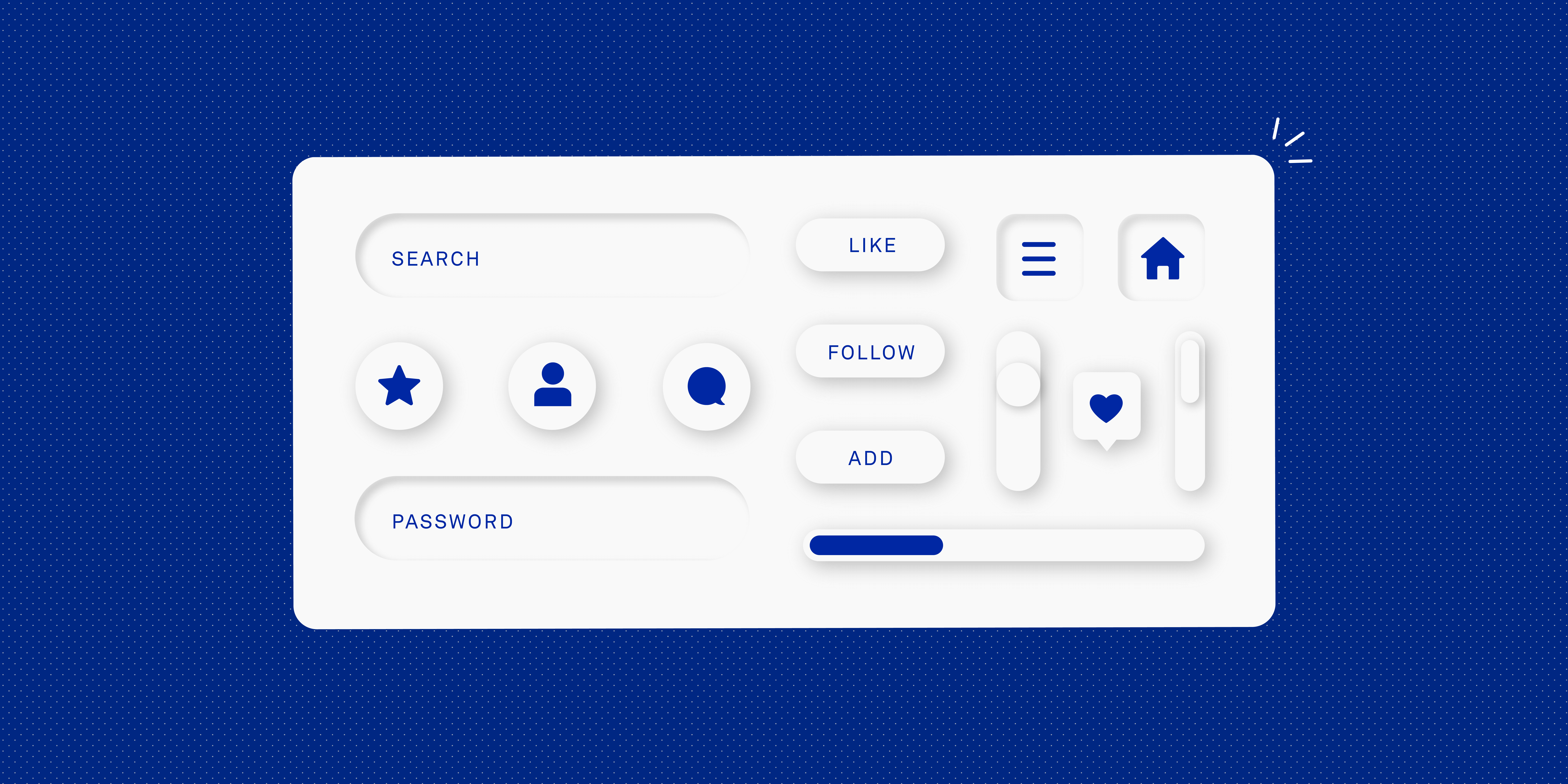Product design is a cross-functional discipline that spans research, strategy, design (UX/UI), and business—with lots of collaboration along the way.
The goal of product design is to ideate, design, and iterate on products that meet a specific user need, make sense from a business perspective, and compete successfully in their given market.
It’s a multifaceted field, touching on UX and UI design, engineering, product management, and more. But what exactly does it entail? What are the core principles of product design, and what process does it follow?
Consider this your ultimate introduction. Keep reading to learn:
- What is product design?
- Why is product design important?
- Is product design the same as UX and UI design?
- What are the 7 fundamental elements and principles of product design?
- What is the product design process?
- What does a product designer do?
- What are the most important product design tools?
- How to get started with product design
Let’s begin with a high-level overview.
What is product design?
Product design is a multidisciplinary field concerned with the conception and creation of products that:
- Solve a user problem
- Fill a specific gap and perform well in their given market
- Contribute to the achievement of business goals.
Product design usually sits within the wider product team or department, working in close collaboration with engineering, product management, UX and UI design, and customer experience.
It involves coming up with new product ideas based on extensive user research, market research, and competitor analysis; devising a strategy and vision for the product; designing and testing product prototypes; and collaborating on the development, execution, testing, and subsequent iteration of the product.
We’ll take a closer look at the product design process later on. First, though: why product design matters.
Why is product design important?
Product design is crucial for both end user satisfaction and business success. It helps businesses and brands to:
- Deliver a positive user experience and gain loyal customers. A key aspect of product design is understanding end user needs and creating a product that meets those needs. This is essential for ensuring happy, satisfied customers who remain loyal over time.
- Secure a competitive edge. Product design involves extensive market research, helping to identify gaps in the market and determine how to successfully position the product within that particular market. This is critical for building brand awareness and outperforming competitors.
- Boost efficiency. Another important aspect of product design is developing design systems, processes, and documentation which help to streamline and optimise collaboration. As such, product design plays a crucial role in driving efficiency.
- Track product performance over time. A good product design process includes setting a clear strategy for the product which is tied to business goals. It allows businesses to define and measure success metrics and monitor the product’s performance on an ongoing basis.
Is product design the same as UX and UI design?
Product design has many similarities with UX design. It’s steeped in user research, usability, solving user problems, and providing a positive user experience. So aren’t they just two terms for the same thing?
Not exactly.
UX design focuses on the experience a user has while interacting with a product or service. It seeks to identify the end user’s problem(s) and provide them with a functional, delightful, easy-to-use solution.
Product design, on the other hand, takes a broader, more holistic view of the product—considering not only the usability of the product, but also where the product fits into the market and how it serves business goals.
You can think of UX as a subset of product design. It’s just one of several pillars that product design encompasses. UI design (or user interface design) is a subset of UX, focusing on the look, feel, and interactivity of a digital product. You can read more about the differences between UX and UI design in this post.
In short: Product design, UX design, and UI design are not the same thing:
- UX and UI design are subsets of product design, focusing on the usability, functionality, look, and feel of the product itself.
- Product design takes a more holistic approach, considering the design of the product but also its position in the market, the product strategy, and how it relates to business objectives.
With all that said, it’s important to note that the distinction between UX, UI, and product design can get murky in the real world. Larger companies with bigger budgets are more likely to have dedicated roles for each discipline, while smaller companies may have just one or two designers who span product design, UX, and UI.
As with most design job titles, each company has their own interpretation. We recommend reading through product design job ads to get a feel for how different companies tend to define the role.
What are the 7 fundamental elements and principles of product design
Product design is all about creating products that meet the end users’ needs, are competitive in their market, and help to achieve business goals.
To ensure success in all three areas, product design must consider seven key elements:
- Desirability
- Feasibility
- Viability
- Functionality
- Aesthetics
- Quality
- User experience (UX)
Let’s explore how each element contributes to a successful product.
1. Desirability
This considers whether or not the product you plan on designing is actually wanted or needed by your target users. If your product idea doesn’t solve a user problem or meet a specific need, it’s not desirable and therefore won’t be successful.
2. Feasibility
A good product must be feasible—or, in other words, “doable”. You might have the best idea ever, but if it isn’t achievable in terms of the technology, materials, and resources available, or within your desired budget and timeline, it may not be feasible.
3. Viability
Product design must also consider whether or not a product is viable. That is, does it make smart business sense? Will the product be profitable and contribute to long-term growth for the business? If you can’t put forward a strong business case for building the product, your idea is not viable
Learn more: A guide to desirability, feasibility, and viability in product design.
4. Functionality
Every product must have a clearly defined purpose, and it must be functional in relation to that core purpose. It should be designed and built in a way that enables the end user to perform their desired tasks, and it should function just as the user expects it to.
5. Aesthetics
A competitive product offers seamless functionality and visual appeal. The aesthetics of a product help to forge a strong brand identity, attract the target audience, and enhance the user experience. Aesthetics includes the colours, imagery, typography, and overall UI design of the product. In the case of physical products, it also includes the materials used.
6. Quality
Quality is a key differentiator. The markers of a quality product include high performance, reliability, meeting the user’s expectations, and adhering to industry standards. If a product falls short in terms of quality, it will struggle to compete with similar products on the market—and the brand reputation will suffer.
7. User experience (UX)
This pillar of product design considers the quality of the user’s experience with the product. A successful product is easy to use and navigate, is accessible and inclusive, and does exactly what it promises. You can learn more about good vs. bad UX here.
What is the product design process?
Now we know what product design is, let’s outline the process that a product designer might follow.
Bear in mind that there’s no one-size-fits-all here. Every product designer will have their own approach depending on the context, and it doesn’t always unfold in a linear fashion. Still, here are the key steps that typically feature in the product design process:
- Define a product vision and strategy
- Conduct user and market research
- Ideate
- Prototype
- Test and iterate
- Develop and launch
- Post-launch: gather user feedback and make improvements
So what happens at each stage? Let’s take a look.
Define a product vision and strategy
Every successful product is underpinned by a clear vision and a solid strategy.
What’s the difference? The product vision defines where the product should end up in the long-term, while the strategy looks at how the vision will be achieved in the short- to mid-term.
At this stage in the process, the product designer works with the rest of the product team to answer key questions such as:
- Why are we building this product?
- Who is the product for?
- What problem will the product solve?
- How will the product evolve over time?
- How will we define and measure the success of the product?
Product vision and strategy are essential for ensuring that all stakeholders are aligned and moving towards a common goal, and that the product evolves in line with business objectives.
Conduct user and market research
The research phase comprises both user research and market research.
The goal of user research is to gain a deeper understanding of your target users. What do they want and expect from the product? What challenges and pain-points do they need you to solve?
Common user research methods include user interviews, surveys, and contextual enquiries. You can learn more about different types of user research and their associated methods in this guide.
The goal of market research is to determine what competing products already exist, to identify gaps and opportunities in the market, to understand market trends, and to explore how you might position your product.
Everything you learn in the research phase will inform how your product takes shape.
Ideate
With user and market research complete, you should have a clear understanding of the problem you’re aiming to solve. Now it’s time to come up with potential solutions.
The ideation phase involves brainstorming solutions and exploring their validity. You might create customer journey maps and storyboards to visualise how a user would interact with your proposed solutions, and to uncover potential pitfalls.
By the end of the ideation stage, you will hopefully have a shortlist of concepts—or even a single idea—that you want to carry through to prototyping and testing.
Prototype
The prototyping phase allows you to simulate how the product would look and function, and to test it with your target users before getting it developed for real.
Low-fidelity prototypes map out the structure and information architecture of the product, while high-fidelity prototypes include visual detail and interactivity. Depending on the size and setup of the team, prototyping might be carried out by the product designer, or it may be handed over to the UX and/or UI designer.
Test and iterate
With your prototypes at the ready, you can test your idea(s) with real (or representative) users.
The goal of the testing phase is to evaluate how your product performs in an almost-real-world context. Does it function as intended? Is it easy to use and navigate? Does the design, in its current form, deliver a great user experience? Is the product meeting the intended user need?
It’s likely that user tests will highlight usability issues or uncover further opportunities for you to explore. Based on your findings, you’ll iterate on the design until it’s ready to go live.
You can learn more about product and UX testing in this guide.
Develop and launch
The product design process doesn’t end with the design of the product. Product designers collaborate closely with engineers and developers (or manufacturers, in the case of physical products) to carry the product through from prototype to launch.
This involves conducting or overseeing the design-to-developer handoff, sharing product specifications and relevant documentation, reviewing the product at various stages throughout the development process, and solving any design issues that arise along the way.
Post-launch: Gather user feedback and make improvements
The process doesn’t end once the product has been launched, either! Throughout the product’s lifetime, the product designer will continue to monitor its performance, to gather user feedback, and make changes and improvements.
With ongoing feedback and iteration, product designers can ensure that their product remains competitive and continues to meet the end users’ needs. Whether it’s redesigning certain aspects of the product to improve usability, adding new features to enhance the product’s value, or removing features that become redundant over time—the product designer’s work is never done.
Learn more: How to incorporate user feedback into the product design process (and why it matters).
What does a product designer do?
We’ve explored the product design process—but how does this translate into day-to-day tasks? The product designer role involves:
- Product strategy and vision;
- Research and testing;
- Cross-team collaboration;
- Hands-on design work;
- Processes and documentation.
Here are some of the most common product designer duties based on real job ads:
Product strategy and vision:
- Partner with the product team to build and validate hypotheses about new opportunities, playing a significant role in shaping the product roadmap and direction.
- Work closely with engineers and product managers to devise long-term product strategy and short-term tactics.
Research and testing:
- Conduct user research and use insights to architect the UX of new product improvements and opportunities.
- Be a passionate advocate for the end users.
- Empathise with users by observing and analysing research labs.
- Perform usability testing and gather user feedback to inform design decisions.
- Stay updated with latest trends and competitor products.
- Build a deep understanding of users and their specific needs through qualitative and quantitative research.
Cross-team collaboration:
- Connect with internal partners to understand business goals.
- Partake in resource gathering exercises such as design and content audits, competitive analysis, and business partner interviews.
- Participate in cross-functional workshops such as co-creation, empathy mapping, and journey mapping exercises.
- Collaborate with your fellow designers, UX writers, UX researchers, design managers, product owners, and engineers to translate product requirements into useful and usable experiences ensuring adherence to design best-practices and brand consistency.
- Foster design thinking and facilitate generative discussions with cross-functional partners, promoting a culture of innovation and collaboration.
- Work with product managers and engineers to form an empowered cross-functional product team.
- Collaborate closely with product and engineering teams to create easy-to-use and visually appealing experiences that align with business goals.
- Help the team balance product decisions through a tradeoff between value, usability, feasibility, and viability. As the product designer, you are the main person responsible for the usability.
Hands-on design work:
- Work closely with the product, engineering, and analytics departments to bring new opportunities to life through wireframes, mockups, and pixel-perfect designs.
- Synthesise user needs and business objectives to formulate testable prototypes and validate hypotheses.
- Ideate and prototype in both high- and low-fidelities using pen and paper and digital tools
- Build any required supporting documentation such as user flows, personas, service blueprints, etc. in accordance with UX standard processes.
Processes and documentation:
- Be an active participant in the design team’s continuous effort of consolidating our UI & UX design system.
- Develop and maintain design documentation.
- Participate in regular design reviews.
You can learn more about the role in this guide: What does a product designer do?
What are the most important product design tools?
Throughout the product design process, product designers use specialist tools. These include:
- Research tools such as Optimal Workshop, Lookback, Typeform, and Maze. Discover more research tools here.
- Design, wireframing, and prototyping tools such as Adobe XD, Sketch, Figma, and InVision. You’ll find a comprehensive guide to wireframing tools here and a comparison of the best prototyping tools here.
- Testing, feedback, and analytics tools like Hotjar, UsabilityHub, Productboard, and Optimizely.
- Collaboration, project management, and documentation tools such as Slack, Trello, Jira, Miro, Asana, and Notion.
Get started with product design
If you like what you’ve read about product design so far, you may be wondering how you can break into this exciting, multifaceted, and high-impact field. The first step is to learn the fundamentals of design and develop the practical skills that are critical to the product design process.
A Product Design course is an excellent place to start. It’ll teach you many of the skills, tools, and methodologies you’ll need for a career in product design, from user research and analysis techniques to design principles and patterns, right through to prototyping and handover.
Once you’ve got the design fundamentals in place, you can expand your skill set to incorporate market and competitor research, product strategy, and cross-functional collaboration.
Want to learn more about product design before you take the leap? Check out these expert interviews:
- An interview with Sarah June Fox, Senior Product Designer at Etsy
- An interview with Margarida Botelho, Senior Product Designer at Revolut
- An interview with Sean Conlon, Digital Product Designer at ASOS





